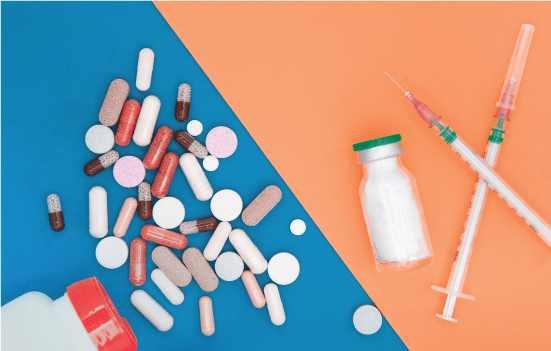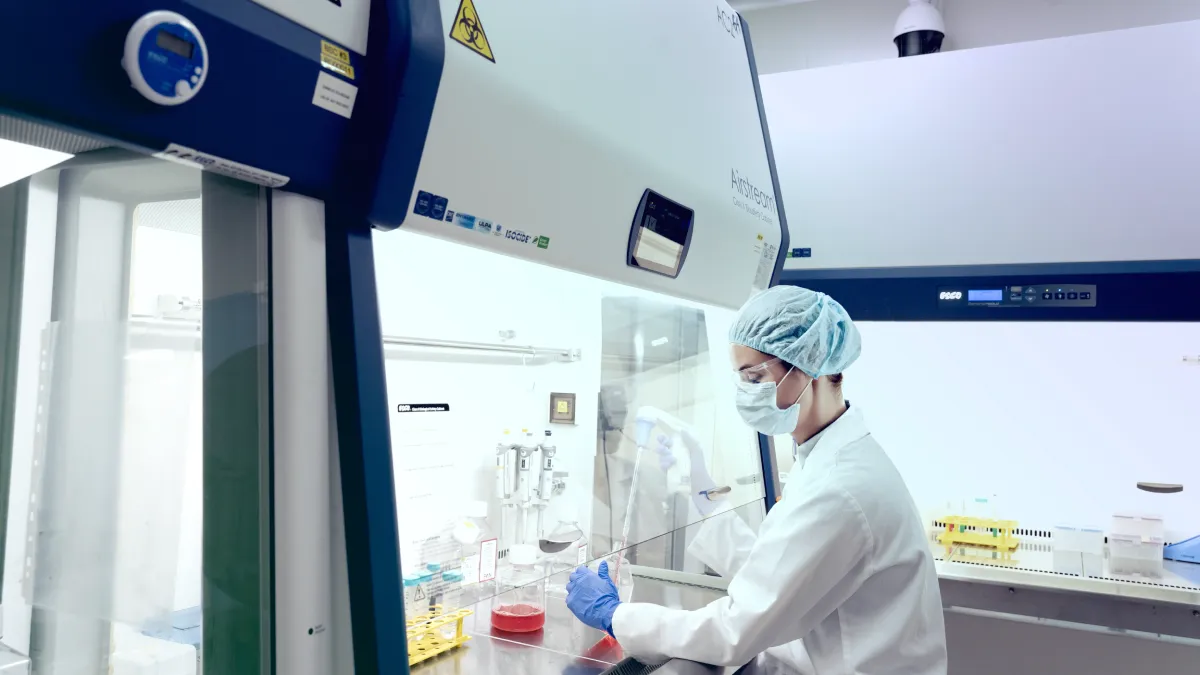Applications
Antimicrobial Resistance

About 70% of the antibiotics in commercial distribution in the United States are also administered in animals, specifically in livestock and poultry. This is problematic as antibiotic-resistant microorganisms can develop in food-producing animals which can then be transmitted to the directly exposed unprotected individuals. Antibiotics in livestock and poultry industry have been used, sometimes abused, to prevent, cure diseases, and also growth promotion.
| Antibiotics | Vaccines | |
|---|---|---|
| Outcome | Antimicrobial medicine effective at treating bacterial infection | Exposes animal to non-infective form of pathogen to trigger immune response |
| Form | Table, injectable, or added in to animal feed or water | Most commonly injected |
| Outbreak control | Prevents the SPREAD of an outbreak | Prevents the OCCURRENCE potential outbreak |
| Period before reaching intended outcome | 24-48 hours | 3-4 weeks before animal can develop immunity against specific pathogen |
| Withdrawal period | Drug residue may remain after treatment and thus, would require withdrawal period (how long before the treated animal can enter the food supply) | Biological antigens present on the vaccine can easily be broken down and thus, no withdrawal period required for vaccinated animals |
| Caveats | Giving high doses might generate resistant bacteria | Development of easily-administered vaccines is challenging |
In a point prevalence survey conducted from 2000 to 2018 in low- and middle-income countries, the highest antimicrobial resistance rates were observed in drug classes that are used for promoting growth of animals. Systematic surveillance on the farm-level is important to keep track of overuse of antibiotics that are useful in treating human diseases.

The use of antibiotics in livestock and poultry affects downstream soil microbial communities. Antibiotic resistance genes (ARGs) pollute the soil microbial community, which can be transferred between and among microbial populations. Horizontal gene transfer allows the transfer of the genes to generate more population of antibiotic-resistant bacteria. These microbes can then infect their hosts, and subsequently, have the potential to infect humans.
It is a challenge to develop policies in agriculture, reducing antibiotic use that shall apply to all countries. Microbes can be carried through international travel, and thus, it would be better for all countries to implement similar programs to reduce antibiotic use.
Caution should be exercised before implementing reduction of antibiotic use. It should still be used as an intervention for sick animals, which if left untreated, may result in disease transmission in nearby animals and humans.
Farms and policy makers should focus instead on improving nutrition, antiparasitics, surveillance, diagnostics, hygiene, and sanitation to reduce the reliance on antibiotics. Prevention is also a better alternative through the use of vaccines.





